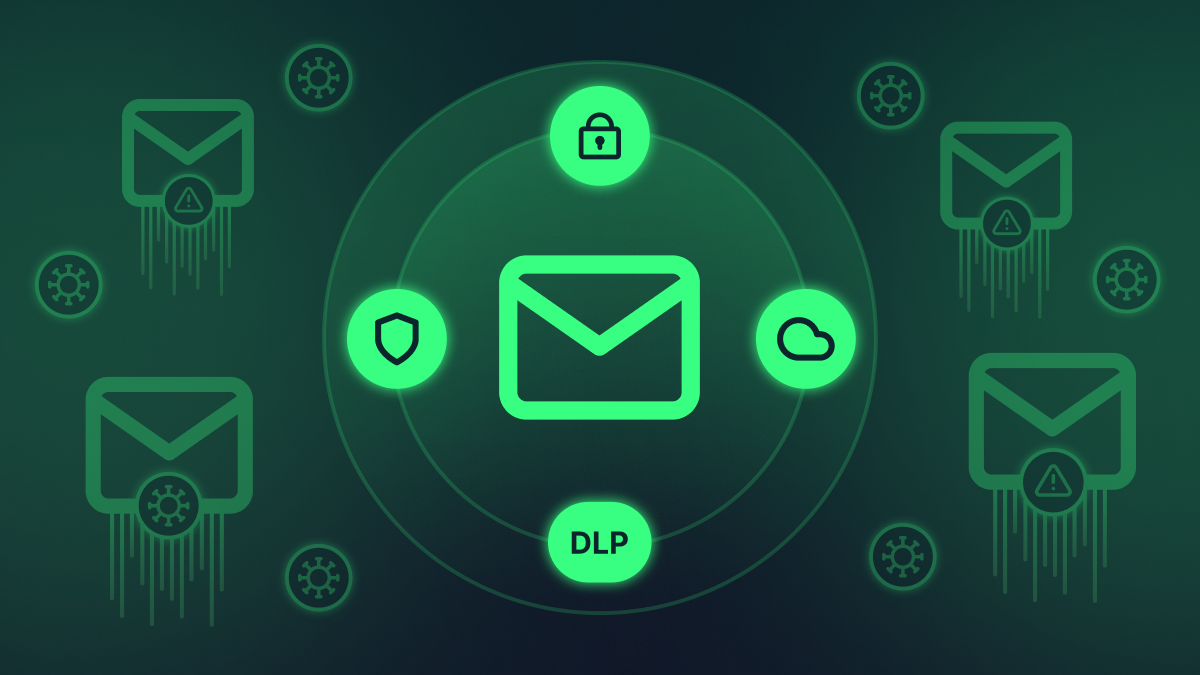If you wanted to steal from a company today, you wouldn’t start in the data lake—you’d start in the inbox. Email is where work actually happens, which now makes it the ideal dataset for LLMs: perfect context, written in plain language, rich with credentials, deals, and PHI. Employees paste it into public copilots, attackers feed stolen mailboxes into their own models, and insiders use LLMs to repackage data on the way out. Microsoft 365 and Google Workspace may say you’re “secure”; the models chewing on your email say otherwise.
Why email keeps outsmarting legacy DLP
Most organizations built their email defenses around one assumption: that data loss happens through attachments. But in 2025, attackers, AI models, and even employees have found quieter, smarter ways to move sensitive data (ways that legacy tools simply weren’t designed to see).
Let’s look at what’s slipping through the cracks:
- Data hiding in plain sight: Sensitive information—credentials, PII, PHI, or financial data—often gets pasted directly into email bodies. Traditional DLP rules built for attachments miss these entirely, because they can’t distinguish context or intent.
- Screenshots as an exfiltration tactic: When employees send screenshots of dashboards, financial reports, or health data, most DLP systems can’t read the text inside those images. It’s sensitive information, hidden in pixels.
- The download-to-upload blind spot: A file downloaded from Gmail or Outlook can easily be reuploaded to a personal account or AI tool moments later. Without visibility into data lineage, those two actions appear unrelated—making it nearly impossible to track.
- Persistent access via shared links: Cloud links to Google Drive or SharePoint are a quiet security nightmare. Even with sharing restrictions, links can persist indefinitely—giving ongoing access that most email monitoring tools never catch.
The new reality: Email is a dynamic data channel
Email is no longer just a messaging tool, it’s a high-volume data transport system that touches every business process. That means modern security can’t rely on static policies or attachment scanning. It requires context, automation, and real-time insight into how and why data is being shared.That means:
- Static policies and basic attachment scanning are table stakes at best.
- Real control requires runtime understanding of who is sending what to where and why.
- Security needs to adapt in real time to the way people and AI actually use email.
The future of email security is context-aware
Legacy DLP works on content. Next-generation data protection works on context.
To keep up with modern exfiltration techniques, email security needs to:
- Understand intent: AI models can now evaluate whether an employee’s action aligns with normal business patterns—like sending quarterly reports to leadership versus an external address.
- Trace data lineage: Visibility must extend across SaaS apps, browsers, and endpoints to connect the dots between downloads, edits, and outbound emails.
- See beyond text: Computer vision and AI detection can identify sensitive data hidden in screenshots, design files, and complex document types.
- Scale without friction: Security should protect employees without slowing collaboration down.
- Integrate everywhere: Email is only one channel. Real data security connects protection across all tools—Slack, Drive, Notion, ChatGPT, and beyond.
Moving forward
Microsoft 365 and Google Workspace give you a solid base—but they weren’t built for a world where LLMs actively read, summarize, and repurpose inbox data. Every risky email today is both an exfil event and training data for someone else’s model.
The missing layer is adaptive, context-driven protection that understands who is sending what to which human or LLM, and can intervene in real time—across email, Slack, Drive, Notion, ChatGPT, and whatever comes next.
Polymer does exactly that: identity-aware guardrails, lineage tracing, and inline controls that keep sensitive data from becoming free fuel for internal or external LLMs. Polymer allows your organization to:
- Build unlimited policies with 500+ pre-built entities or build your own using NLP rules, regular expressions, dictionary values, and advanced business logic.
- Automate policy actions like redaction, deletion, ticket creation, quarantine, labeling, and more.
- Easily deploy real time controls of all employee interactions with ChatGPT, Claude & other LLM tools using the Polymer browser extension.
Don’t wait for the “how did this end up in their model?” moment. If you want to restrict what LLM’s can learn from your inboxes, book a demo with Polymer and we’ll walk through what this looks like on your stack.


